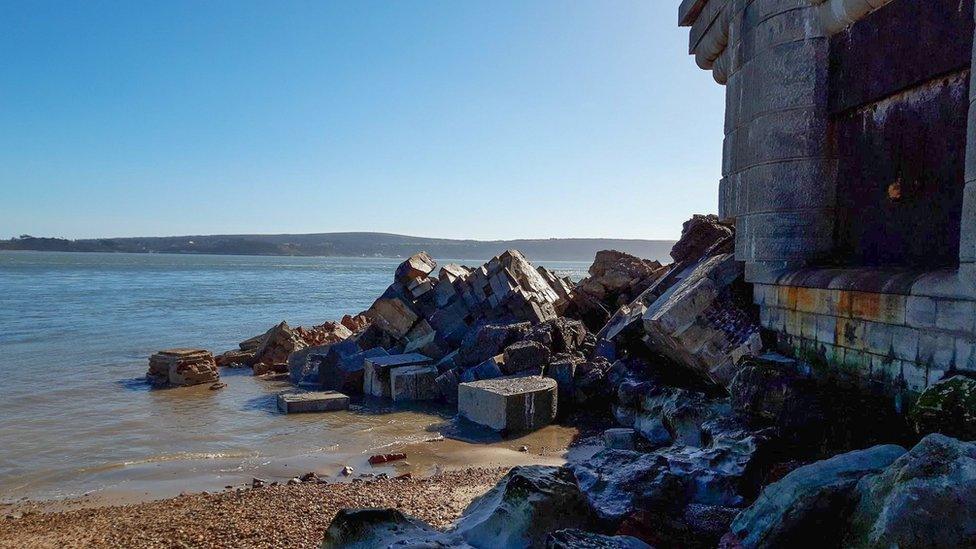Henry VIII's Hurst Castle stabilised after collapse
- Published
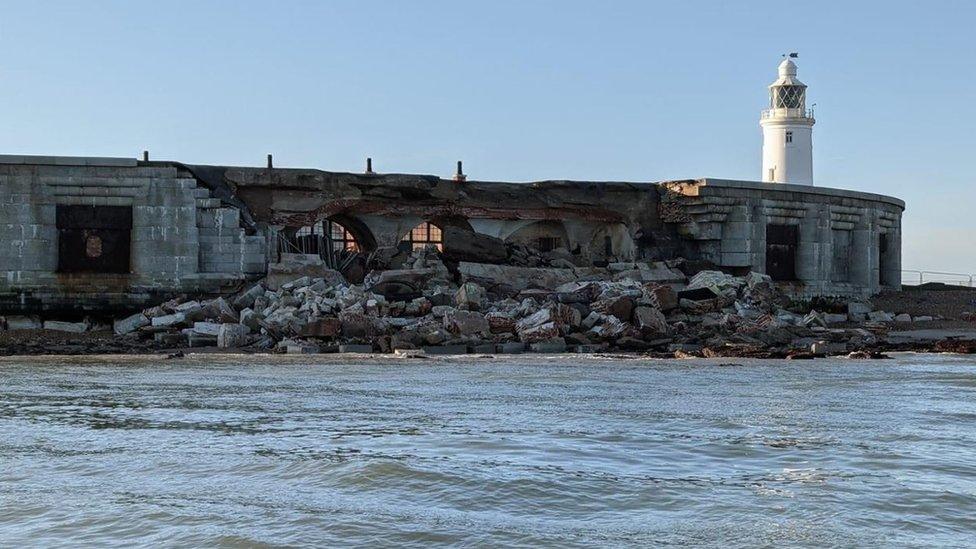
A section of wall in the east wing of Hurst Castle collapsed in February last year
Part of a castle built by Henry VIII has now been stabilised after it collapsed, English Heritage has said.
In February last year, a wing of Hurst Castle, near Milford-on-sea, Hampshire, collapsed after the sea exposed and undercut its foundation.
Since then 22,000 tonnes of shingle and rock have been used to guard against the sea's onslaught.
English Heritage said the site was one of the most difficult to protect in England and the work had cost £3m.
It added a new sea defence to protect the east wing will be built, and it will undertake a major study to determine how best to protect the heritage site.
Rob Woodside, English Heritage estates director, said the castle is at risk from multiple threats.
He said: "A year since the collapse of part of the Victorian east wing and English Heritage has made great strides in working to protect Hurst Castle, but there is more work to be done.
"This is an ever-changing environment and despite our efforts, Hurst Castle's east wing and west wing - where we have also detected movement - are at risk from myriad threats; from coastal erosion to harsh sea storms."
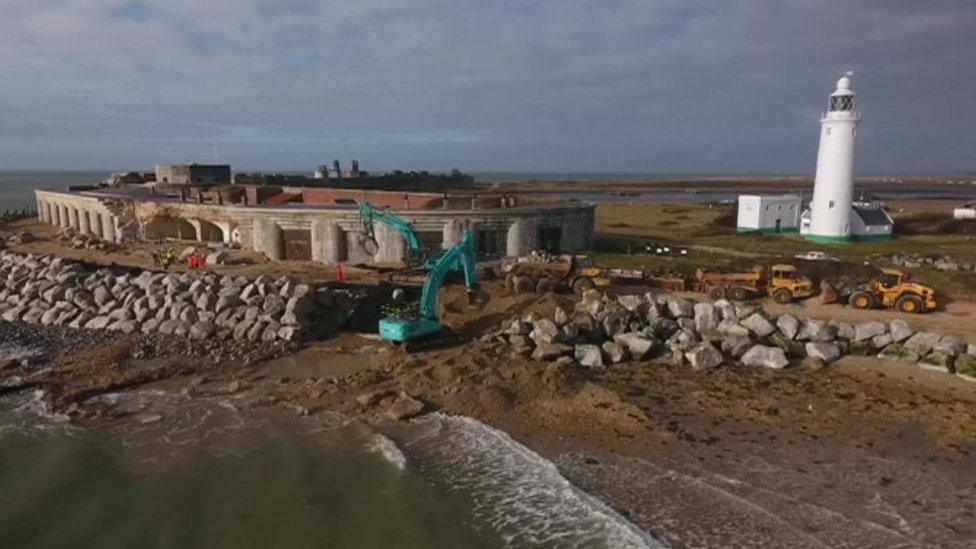
Stabilisation work at Hurst Castle has cost around £3m
Longshore drift, rising sea levels and more frequent storms mean the castle is hard to protect, the charity said.
The ever-changing nature of the spit the castle sits on, time constraints posed by tides and its inaccessibility also pose a challenge.
Hurst Castle was originally built by Tudor king Henry VIII between 1541 and 1544 to guard Needles Passage, which is the narrow western entrance between the Isle of Wight and the mainland.
From 1860, the large east and west wing batteries were added as part of a defence programme.
The castle was also used for searchlights and guns during World War One and World War Two.
The Tudor Keep - the most historic part of the castle - will open in April.
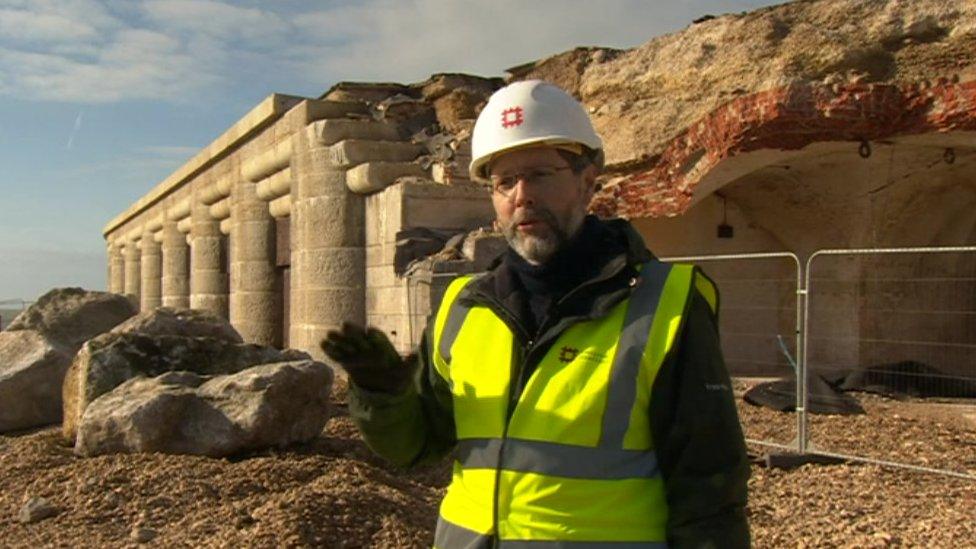
English Heritage estates director Rob Woodside said the castle is at risk from multiple threats

Follow BBC South on Facebook, external, Twitter, external, or Instagram, external. Send your story ideas to south.newsonline@bbc.co.uk, external.
- Published17 September 2021
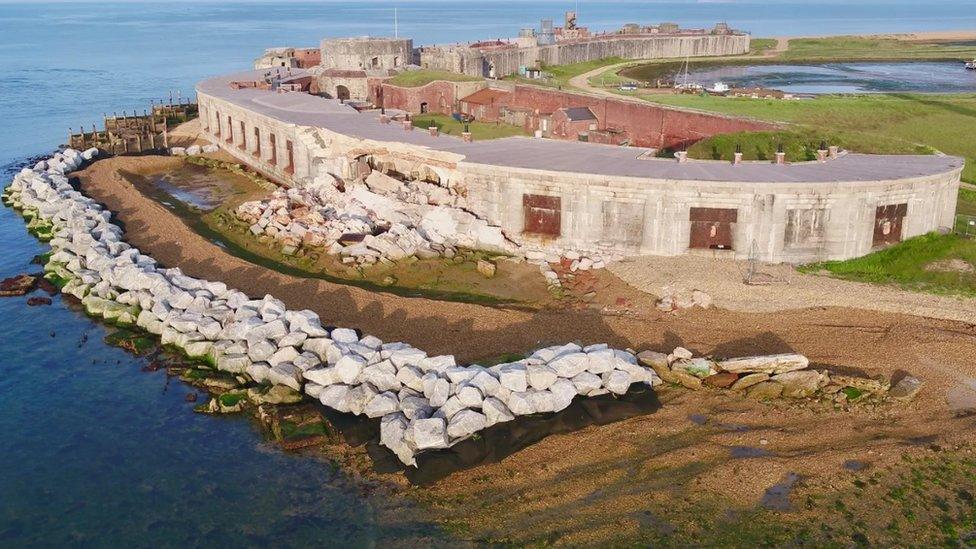
- Published27 February 2021
